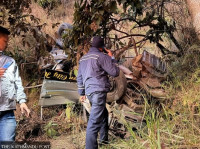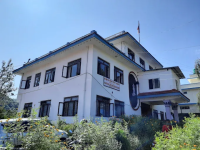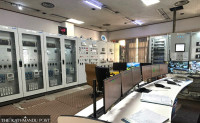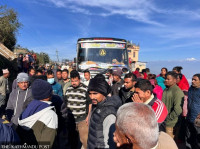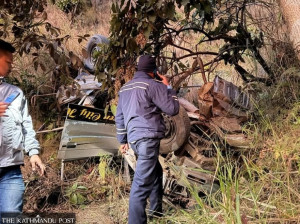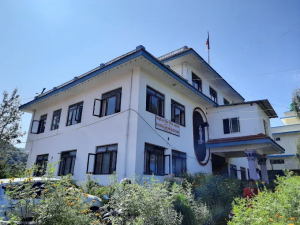Bagmati Province
In the flood’s wake, Rasuwagadhi left in ruins, China trade route cut off
Survivors recall the terrifying night. Officials plan road restoration before Dashain.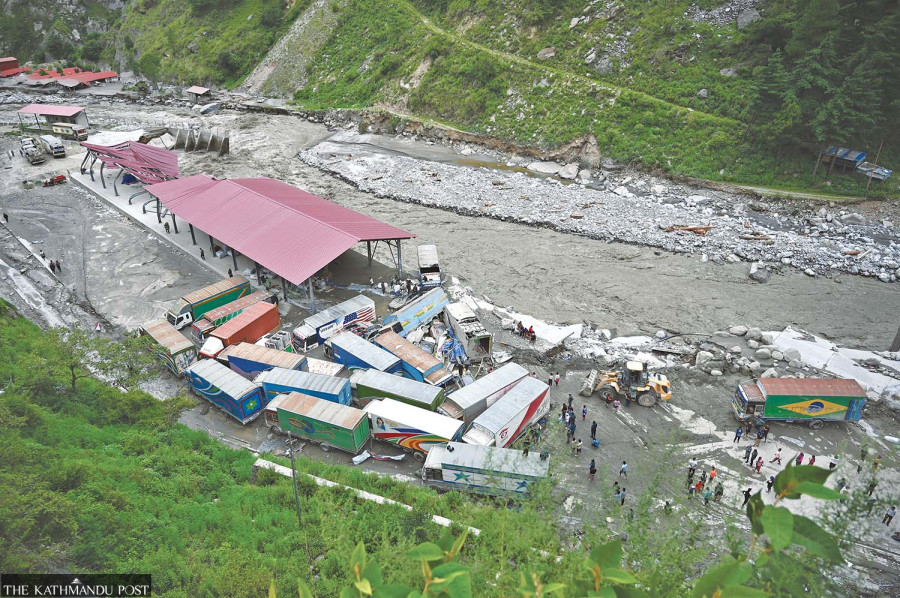
Bimal Khatiwada
Sixty-year-old Lhakpa Tsho Ghale still remembers the devastating 2015 earthquake. She used to run a small hotel in Rasuwagadhi back then and witnessed the tragedy unfold before her eyes. But what she experienced in the wee hours on July 8 this year was even more terrifying.
“The earthquake was horrifying, but this flood felt even more dangerous,” said Ghale, recounting how she stood helplessly on the hilltop of Timure as floodwaters roared below, sweeping away trucks, goods and livelihoods.
Perched above the raging Bhotekoshi river, Timure used to offer a picturesque view of vehicles parked in neat rows along the customs yard. But several hours before daybreak on Tuesday, that calming scene turned into an ugly nightmare. Freight trucks were swept away in minutes. Several drivers who had rushed to move their vehicles were washed away as well.
On the other side of the customs yard, the 111 MW Rasuwagadhi Hydropower Project’s residential quarters were submerged by the flooded river and at least eight Toyota Hilux vehicles were buried under the debris.
Ghale, like many others from the area, worked in the customs yard as a porter. “We used to work in groups. There are 10 of us in our group and the group earns around Rs8,000 a day. Now there’s no work. My only source of income is gone,” she said with tears welling in her eyes.
The job of loading and unloading goods at the yard was restricted to residents of Timure, Dahal Phedi and Thuman. According to Chandi Raj Gelal, an official at the Rasuwa Customs Office, 610 such registered workers were assigned tasks in rotation under the supervision of the Porters’ Union. Under normal conditions, a group would earn Rs8,000-10,000 per truck.
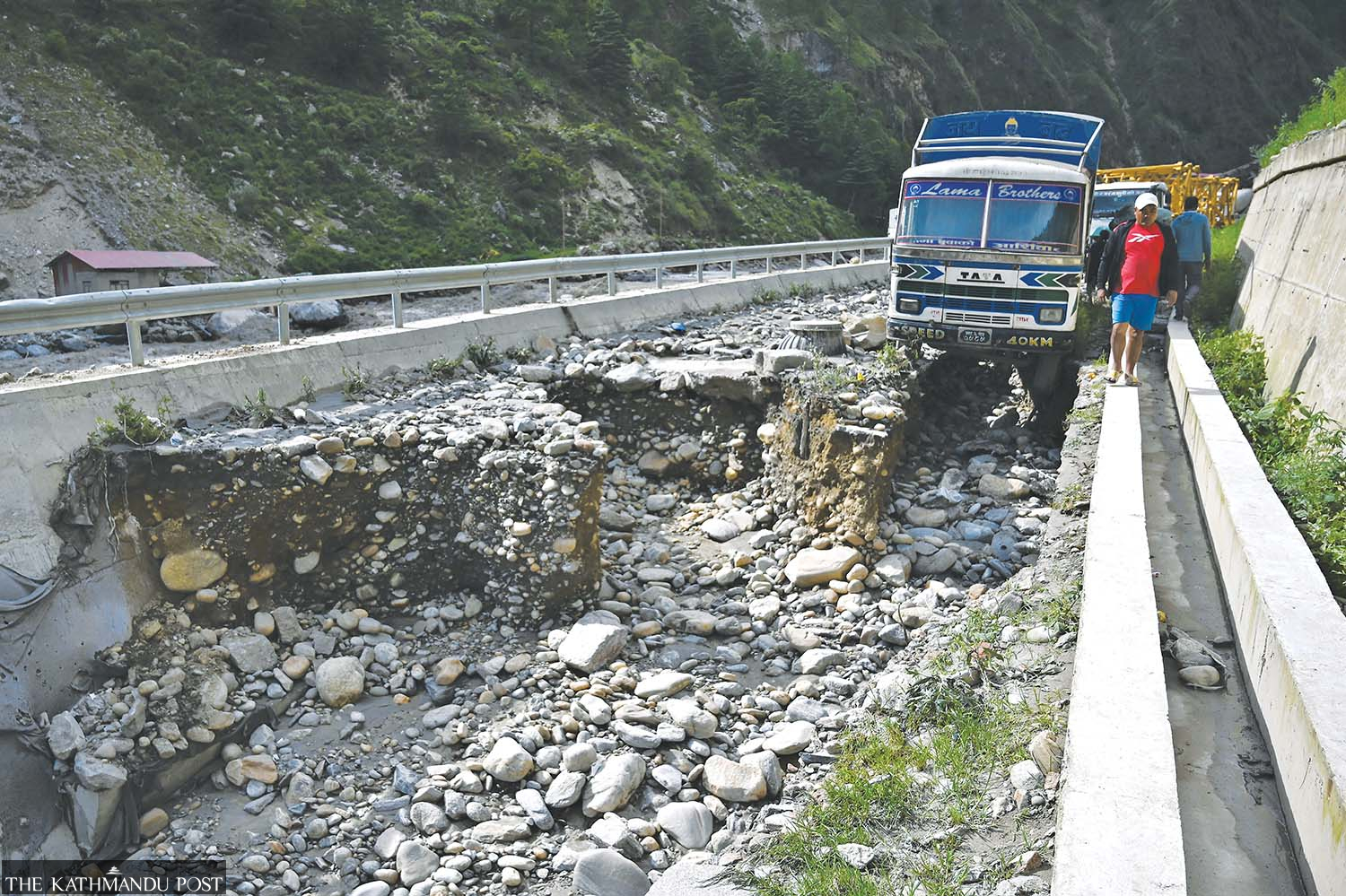
“Now, the port is closed. Locals are left without income. The flood washed away the road, and we now can’t go to the district headquarters. There’s been no electricity since the flood. We’re living in complete darkness, unable to even call our children in Kathmandu,” said Meera Thapa Magar, a local.
A flash flood that originated in Tibet’s Lhende river and surged into the Bhotekoshi river has left a trail of destruction in northern Rasuwa, a mountain district in Bagmati province. The downstream devastation has been immense, damaging infrastructure, sweeping away vehicles, and leaving at least nine dead and 19 missing.
Entire sections of the Rasuwagadhi–Timure area now lie buried under mud and debris. Roads have been cut off, and electricity, internet, and telephone services remain disrupted since Tuesday.
The road and power lines have been destroyed in multiple places in Rasuwa. “This is an international trade route connecting Nepal and China. The government must act swiftly to rebuild the road and reopen the border,” Meera urged.
According to the local people, Tuesday's flood was the most devastating in decades. “Our elders said there was a similar flood in 1962. There were more human casualties then, but now the floods have done great damage to local infrastructure,” said Dhawa Ghale, another local.
Kami Chhiring Tamang, chairman of ward 2 of Gosainkunda Rural Municipality, confirmed there was no rainfall—yet the flood came with terrifying force. “The flood has caused enormous physical damage. The government must take the lead in restoring the road and border operations. We’ve already urged the federal government to act,” he said.
The 16-kilometre road from Syaphrubesi to Rasuwagadhi, built with Chinese assistance, has been devastated. There were landslides in over a dozen locations. In Lingling, the road has been entirely swept away. Security personnel from the Nepal Army, Armed Police Force, and Nepal Police are helping stranded pedestrians cross dangerous sections with ropes. Timure itself is now accessible only by navigating steep cliffs on foot. Steel electric poles lie scattered across the road.
Although a team led by Chief District Officer Arjun Paudel reached the Rasuwagadhi area by helicopter on Tuesday, there’s been no significant government presence since. Paudel’s team had to be airlifted on Wednesday after being unable to return by land.
For now, all vehicular movement between Syaphrubesi and Timure has halted. This route once carried Chinese freight vehicles into Kathmandu. According to Bijay Jaishi, director general of the Department of Roads, engineers are assessing the damage. “A total of 1,200 metres of road has been damaged. We’ll first reopen blocked segments for emergency transport. The road should be functional before Dashain, a major Hindu festival that falls in September-October,” he said.
According to Jaishi, construction of the 16-kilometer road was contracted to a Chinese firm in 2019. “The road construction, which was delayed by the Covid pandemic, is now underway. We are pushing for fast-track completion of the road project,” he said.
‘We clung to a cliff all night’
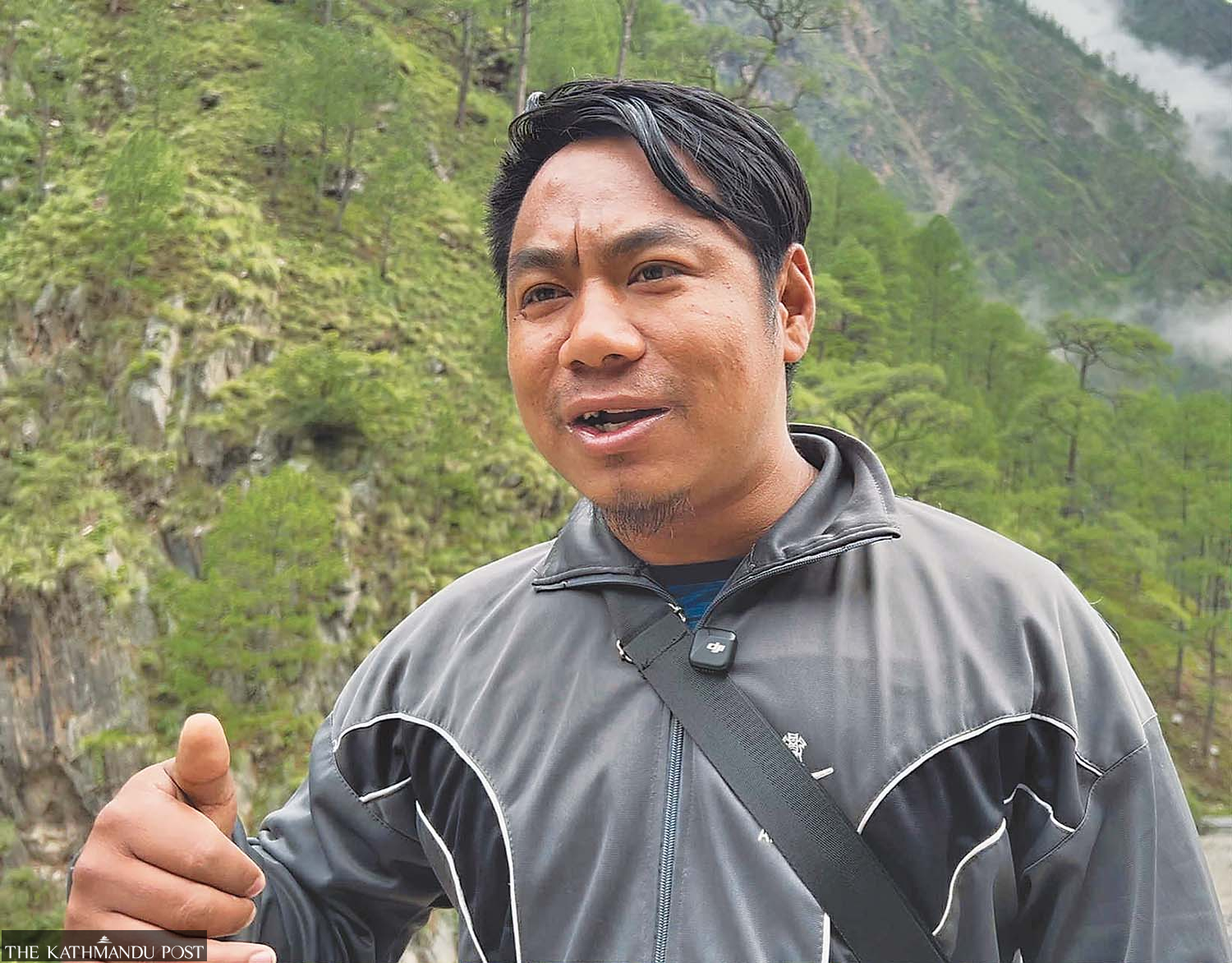
It was 3:15 on Tuesday morning. We were asleep when I felt the ground shake. At first, I thought it was an earthquake. The tremors were violent, and everything was rattling. We all woke up in panic—no one had time to wake others. There were 23 engineers, including myself and two female engineers, living in the quarters of the Rasuwagadhi Hydropower Project’s dam site. We couldn’t grab anything, not even clothes. We ran just as we were, barefoot, half-dressed, scaling the cliff behind our quarters.
In the pitch dark, we climbed and clung to the hillside, hoping the roaring waters wouldn’t reach us. We spent the entire night on that cliff—cold, thirsty, and terrified. There was no water to drink, no food and we didn’t even have proper clothes on. But we were alive. By the next morning, the destruction was clearly visible. The entire residential area had been washed away.
Eight Hilux vehicles were buried under the debris. Laptops, clothes, documents—all destroyed. The dam itself was badly damaged; the main tunnel remained intact. Around midday, the Chief District Officer Arjun Paudel somehow managed to call. At that time, we were taking shelter under an overhang.
Helicopters flew overhead—mostly Chinese ones rescuing their own people. Eventually, a Nepal Army chopper came for us. It took six trips to airlift all 23 of us. After the rescue the first thing I did was send a message to my family: “I’m safe. Don’t worry.” Since then, the network has been down. I haven’t spoken to them again. But I’m alive.
(As told by Yam Bahadur Darlami, civil engineer at Rasuwagadhi Hydropower Project)




 16.63°C Kathmandu
16.63°C Kathmandu
